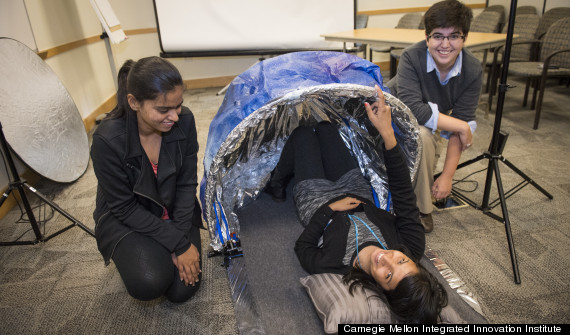Students Make a Prosthetic Leg for a Duck, Showing the Value of Purpose in Learning
 |
| Photo Credit |
http://www.kait8.com/clip/14024822/duck-gets-prosthetic-leg
Sleeping Bag that Turns into Tent Could Help Homeless People this Winter
Groups of students at Carnegie Mellon's Integrated Innovation Institute participated in an "Impact-A-Thon" to create innovative and affordable solutions to help homeless people survive in cold weather. One team created an insulated sleeping bag that expands into a tent. They determined that it needed to be portable and durable so they fitted it with both wheels for pulling and straps for carrying.
 |
| Photo Credit |
How Students' Project Honors Suburban Heroes at Pearl Harbor and Beyond
During a discussion about the Vietnam War, students at Rotolo Middle School became interested in the people from their county who died serving our country in wars. These 8th graders decided to research the stories of "the soldier behind the name." They went beyond the Vietnam war to include the Spanish American War, World Wars I and II, Cold War, Vietnam, Korea, and Persian Gulf. They visited cemeteries, read newspaper articles and yearbooks, consulted maps, drew sketches, coded to create the website, took pictures and videos to create a virtual memorial. Do take a few minutes to visit their virtual memorial and celebrate the war heroes of Kane County. The project continues as more than 200 students have added information to keep it current. Their teacher notes that it is truly the students' project, she just asked "What if..."
How can you spur your students to make a difference in our world today? "What if....." Let us know what your students decide to do!
